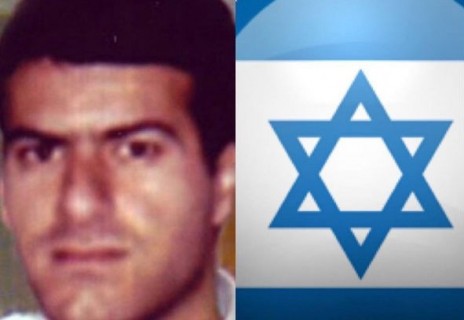Are Hezbollah and Israel on the verge of open war?
Monday, 19 January 2015
Joyce Karam/Al Arabiya
The strike Israel carried out in the Syrian province of Quneitra killing six high-ranking Hezbollah fighters and an Iranian elite general marks the biggest escalation between the two sides since their full-blown war in 2006. However, unlike 2006, the strings are much tighter for Hezbollah this time around, making a repeat of an open war very unlikely. The strike in its scope and target deals a significant blow for both Hezbollah and Iran. Hezbollah took a symbolic hit in losing Jihad Mughniyeh, the son of former operational mastermind for the party Imad Mugniyeh, who was assassinated in 2008 in Damascus, Syria. Mughniyeh’s son was believed to be heading a unit on the Syrian-Israeli border to attack Israel. Also among the six Hezbollah fighters killed was Mohammad Issa, known as Abu Issa, who had a central role in commanding the party’s fighters in Syria and securing the control of Damascus for the Syrian regime. In that same convoy was Gen. Mohammad Ali Allahdadi, from Tehran’s elite Revolutionary Guards, who was killed along with five other Iranian soldiers in the strike.
Golan as a ‘red-line’
This is by far Israel’s most detrimental strike against Hezbollah since the killing of Imad Mughniyeh in 2008, and one of the most lethal in the tit-for-tat saga between the two since the founding of the party in the mid-eighties. It is directed against Iran as much as it is against Hezbollah. Mughniyeh’s son, following the death of his father, was embraced by the leadership of the Revolutionary Guard and Qassem Suleimani in particular, while Gen. Allahdadiis was directly involved in overseeing Iran’s activities and militant affiliated groups in Syria.
The biggest takeaway from the Israeli strike to both Iran and Hezbollah is in the location of the operation, near the occupied Golan Heights. “This is by far Israel’s most detrimental strike against Hezbollah since the killing of Imad Mughniyeh in 2008, and one of the most lethal in the tit-for-tat saga between the two. ” Disrupting the “cold peace” since 1974 on the Syrian-Israeli border and expanding Hezbollah’s presence to that front is a red-line for Israel, according to Western sources in Washington familiar with the issue. Those sources convey that in a track-two negotiations and where both former Israelis and Iranians were present at the outset of the Syrian war in 2011, Israel made it clear to the Iranian representative that expanding Hezbollah’s presence and combat operations into the Syrian front was a clear “red-line.”
The Israeli media raised questions on what the 12 Iranian and Hezbollah figures were doing in the Quneitra province on the disengagement line between Syria and Israel. In many aspects, a ravaged Syria offers both Hezbollah and Iran a fertile ground to carry out operations as Lebanon is proving to be more stable and with a strengthened national military.
Measured response
The Quneitra strike puts Hezbollah in a very tough position vis a vis its base and with respect to its military operations in Syria. Today the Lebanese party is fully invested in the Syrian war, with no less than 5,000 fighters, according to U.S. officials. It was Hezbollah’s intervention in Syria in May 2013 that kept the Assad regime afloat and able to maintain its control in Damascus and the bordering areas with Lebanon. Hezbollah has emerged after two years of fighting in Syria as an indispensable ally of the regime and has gained a foothold in Syrian towns that it independently controls.
“The situation inside Lebanon, with many ticking bombs, makes it very unlikely for Hezbollah to engage in an open war with Israel as it did in 2006.”The irony of Hezbollah’s gains in Syria is that it ties its hands in any confrontation with Israel, which is at the core of the party’s mission. Hezbollah arguably does not have the manpower nor the resources that it enjoyed in 2006 to engage in a war with Israel today. The party is fighting on multiple fronts against the Syrian rebels and ISIS inside Syria, another on the Lebanese-Syrian border and inside Lebanon where it protects key towns and assets. It’s an entanglement that Israel seems to be fully aware of and that has allowed it to strike inside Syria repeatedly since 2011, so far without retaliation.
The magnitude of the Quneitra operation, however, and the demand by Hezbollah’s base for a response will ultimately force a measured retaliation from the party and/or Iran. The hashtag “Prepare your shelters” was trending in both Arabic and Hebrew on Twitter yesterday by Hezbollah’s supporters as a message to Israelis in response to the strike. Both Assafir and Al-Akhbar newspapers who have good sources within Hezbollah are anticipating a “measured,” “evaluated” and “deliberated” response from the party.
The situation inside Lebanon, with many ticking bombs, makes it very unlikely for Hezbollah to engage in an open war with Israel as it did in 2006. A more likely response could happen outside Lebanon, either through Syria, or even the Palestinian territories where Iran has been mending fences with Hamas and has strong ties with the Islamic Jihad. Hezbollah and/or Iran could also choose to respond out of the Middle East, and the killing of Alberto Nesman, the federal prosecutor in 1994 bombing of the Jewish center in Argentina, is raising questions about the timing and possibility of an Iranian hand behind the operation. The Quneitra operation marks one of the most tense junctures between Israel and Hezbollah. Given the regional dynamics, however, and Iran’s ongoing negotiations with the West over its nuclear file, the response will unlikely involve open wars and confrontation and hence will be more covert and subtle in its natu





















